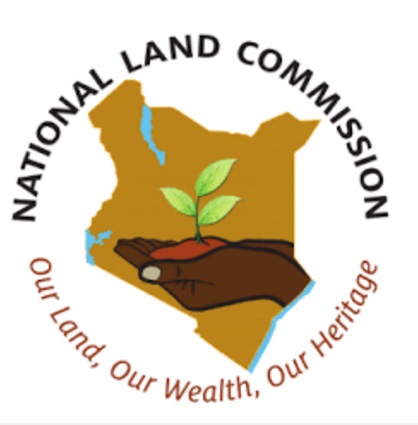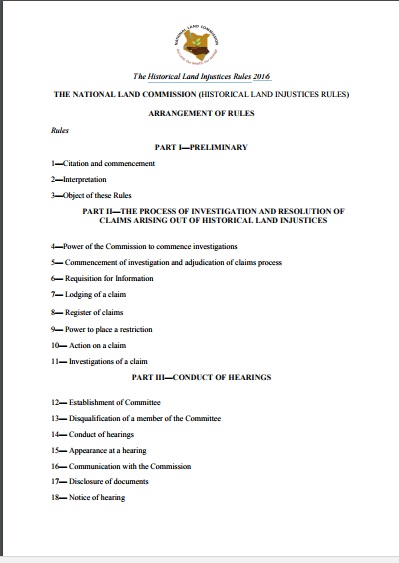Focal point
Location
OUR VISION
Excellent administration and management of land for sustainable development
OUR MISSION
To implement an efficient land administration and management system in order to ensure equity in access to land
CORE VALUES
- Efficiency
- Transparency and Accountability
- Innivativeness
- Integrity
- Professionalism
- Rule Of Law
- Independence
MOTTO
“Our Land, Our Wealth, Our Heritage”
“Ardhi Yetu, Mali Yetu, Urithi Wetu”
Members:
Resources
Displaying 1 - 5 of 7Monitoring and Oversight over Land Use Planning in Kenya: Some Reflections
- Introduction
- Country Profile
- Historical Perspective to Planning in Kenya
- Land Use Planning Framework in Kenya
- Constitutional context
- Policy and Legal Agenda
- Oversight and monitoring function of the National Land Commission
- Interpretation
- Activities
- Challenges and opportunities
The Historical Land Injustices Rules 2016
Article 67(2) (e) of the Constitution of Kenya mandates the Commission to initiate investigation on its own initiative or on a complaint into historical land injustices and recommend appropriate redress. To give effect to this Constitutional requirement, section 15 of the National Land Commission Act as amended by Section 38 of the Land Laws amendment Act 2016, provides the legal framework for redressing Historical Land Injustices.
Urban Land Use Planning Monitoring And Oversight Guidelines
Cities and Urban Areas play a crucial role as engines of development as well as centers of connectivity, creativity, innovation, and as service hubs for the surrounding areas. Kenya has experienced unprecedented urban growth. At independence the urban population was about 8%. This had grown to be about 40% by 2015. It is projected that by year 2030 at least half of the Kenyan population will be urbanized. The rapid rate of urbanization exerts increased pressure on authorities to meet the needs of growing urban populations.
DEVOLVING LAND GOVERNANCE
The Commission has been in the forefront of promoting good governance and accountability in the land sector. Progress in the land sector has been mixed. Through the effort of the government, support agencies and other stakeholders the Commission was able to devolve its function to the 47 counties through the County Land Management Boards (CLMBs). The CLMBs have in effect devolved land services throughout Kenya. However, achieving land, better land governance, accountability in the land sector and ensuring secure land rights for all Kenyan is still to be achieved.
County Spatial Planning And Monitoring Oversight
These guidelines provide a basis for engagement between the County Governments as planning authorities responsible for preparing, approving and implementing County Spatial Plans and the National Land Commission as a monitoring and oversight agency over land use planning. The County Government Act 2012 at section 110(1)(a) stipulates that the County Spatial Plans shall give effect to the principles and objects of county planning and development contained in section 102 and 103 of the same Act.






